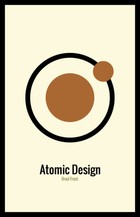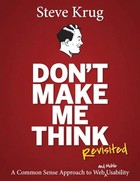The web has undergone a dramatic transformation since its early days. What once required basic HTML knowledge and a text editor now demands mastery of complex frameworks, build tools, and deployment pipelines. This evolution raises an important question: have we overcomplicated web development in our pursuit of feature-rich experiences?
The Era of Simplicity
In the early 2000s, creating a website was refreshingly straightforward. Developers crafted HTML by hand, used simple CSS for styling, and JavaScript sparingly for basic interactions. The development workflow was minimal:
<!DOCTYPE html>
<html>
<head>
<title>My Simple Site</title>
<style>
body { font-family: Arial, sans-serif; }
.content { max-width: 800px; margin: 0 auto; }
</style>
</head>
<body>
<div class="content">
<h1>Welcome to My Site</h1>
<p>This is all you needed.</p>
</div>
</body>
</html>
Websites served clear purposes: information sharing, basic interaction, and genuine communication. Social media platforms had chronological feeds where users could actually "catch up" on content, knowing when they'd seen everything new.
The Complexity Explosion
Today's web development landscape tells a different story. Modern applications require:
The shift from semantic HTML elements to div-heavy markup with CSS classes has made hand-coding more challenging. Where developers once used <table>, <header>, and <nav> elements meaningfully, everything now tends to be a <div> with styling classes.
The Mobile Revolution's Impact
The mobile web fundamentally changed development practices. Early solutions involved separate mobile sites (m.example.com), which created maintenance nightmares. Responsive design emerged as the solution, but it added layers of complexity:
/* Simple responsive approach */
.container {
width: 100%;
max-width: 1200px;
margin: 0 auto;
}
@media (max-width: 768px) {
.container {
padding: 0 20px;
}
}
The Engagement Economy Problem
Perhaps the most significant change isn't technical but philosophical. Modern platforms prioritize engagement over user satisfaction. Infinite scroll, algorithmic feeds, and attention-capturing design patterns have replaced the simple, finite experiences of early social media.
This shift reflects a fundamental change in how we view user interaction:
- Then: Users visit, consume content, leave satisfied
- Now: Users must be retained, engaged, and monetized continuously
Finding Balance in Modern Development
While nostalgia for simpler times is natural, we shouldn't dismiss all modern innovations. Technologies like WebP images, HTTP/2, and modern CSS Grid provide genuine improvements. The challenge lies in choosing complexity wisely.
Progressive Enhancement Approach
Practical Guidelines
- Start with semantic HTML: Use proper elements before reaching for divs
- Question every dependency: Does this 50KB library solve a 5-line problem?
- Optimize for performance: Fast, simple sites often outperform complex ones
- Consider user intent: Are you solving user problems or creating engagement traps?
The Path Forward
The web's evolution isn't inherently problematic—the issue lies in losing sight of core principles. We can embrace modern tools while maintaining simplicity:
- Use frameworks when they genuinely improve development speed
- Implement complex features only when they serve clear user needs
- Remember that loading a simple, fast website is often a better user experience than waiting for a feature-rich application
The most effective websites today often combine modern technical capabilities with the focused, user-centric design philosophy of the early web. They prove that simplicity and sophistication aren't mutually exclusive—they're complementary forces that, when balanced properly, create exceptional user experiences.
Perhaps the real lesson isn't that websites should return to their primitive origins, but that we should approach complexity with the same intentionality that early web developers brought to their craft. In an age of infinite possibilities, the constraint of simplicity might be exactly what we need.













